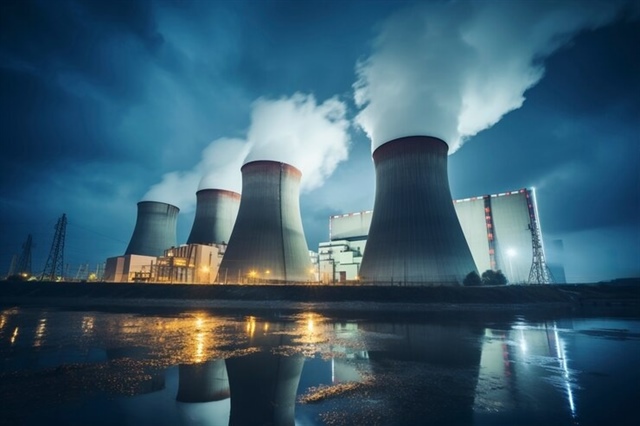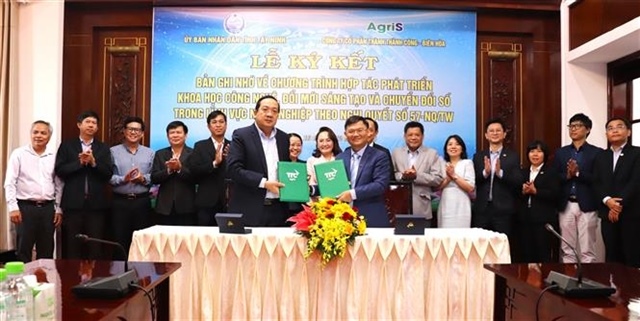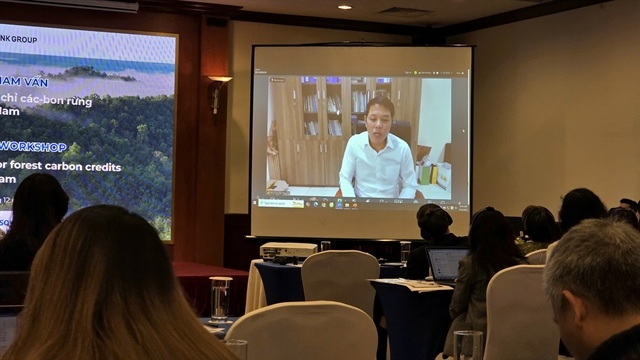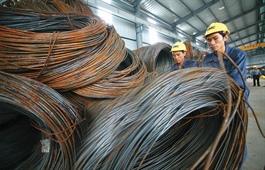Numbers crunched for nuclear programme
Numbers crunched for nuclear programme
To resurrect its dormant nuclear programme, Vietnam needs about 2,400 engineers, scientists, and other staff, but officials are warning of a shortage.

Numbers crunched for nuclear programme, Source: freepik.com |
Nguyen Hong Dien, Minister of Industry and Trade, said at a forum last week that human resources, both in the short and long term, are extremely necessary for the nation’s nuclear power initiative and the Ninh Thuan nuclear project. This includes workers for related research, as well as technical staff to operate such schemes.
“Previously, just considering 1-2 factories, we needed several thousand engineers and technical staff. If we develop more factories, preparing highly qualified and technical personnel is essential. The conference aims to prepare human resources both in the short and long term for the nuclear power programme and the Ninh Thuan plants,” said Minister Dien.
Training people for nuclear power requires decades of preparation or more, before a plant is put into operation. Ly Quoc Hung, director of the Department of Science and Technology under the Ministry of Industry and Trade (MoIT), cited the International Atomic Energy Agency as having estimated that a typical nuclear plant with two reactors needs 600-1,200 employees.
In addition, the experience of some countries with developed nuclear industries shows that, in addition to the number of workers directly serving nuclear power plants, about 350 people are needed with master’s and doctoral degrees in related law and regulations, research and development experts, and fuel cycle experts for research, management, operation, exploitation, and safety assurance.
These numbers also do not consider the needs of state management, researchers at research institutes, and lecturers in educational institutions. If on average, every 12 workers in the nuclear power industry has one researcher; 20 students need one lecturer, the total human resource needs for this group will be about 250 people.
Eight years after Vietnam’s nuclear programme was first abandoned, the National Assembly authorised its resuscitation last November. It is anticipated that nuclear power will assist Vietnam in achieving its net-zero goal by 2050, diversifying its energy sources, and ensuring energy security.
According to a Vietnam Electricity (EVN) report, before ending the investment policy for the Ninh Thuan plant in 2017, the Ministry of Education and Training (MoET) sent over 400 students to study majors related to nuclear power at universities in the Russian Federation, of which 80 students were from Ninh Thuan province in the south-central region.
EVN also sent over 30 students abroad to study majors related to nuclear power, and worked with Russian energy corp Rosatom to develop a detailed training plan for Ninh Thuan 1 plant.
Currently, there are no specific documents reviewing or statistics on the current actual situation of the trained personnel, but it is believed the majority are working abroad or moved into other industries and occupations.
Minister Dien has therefore proposed tasks that need to be focused on this quarter, such as statistics on the needs and scale of specialised fields that require training.
Assessment will also be made of the ability to train personnel for nuclear power development at research and training facilities inside and outside the MoIT. At the same time, it is recommended that these facilities need to register with the competent authority to be assigned training targets for personnel development through their research and training facilities. The time for this work to be completed is in the second quarter.
“The MoIT will preside over and coordinate with the MoET to develop a standard training initiative for training in nuclear power,” said Minister Dien.
|
Bui Quoc Hung, deputy general director Electricity and Renewable Energy Authority Ministry of Industry and Trade The amended Electricity Law will take effect from February 1. The Ministry of Industry and Trade (MoIT) and its departments have developed a series of policy mechanisms. In particular, the Electricity and Renewable Energy Authority (EREA) has developed two decrees, of which one is on investment planning and selection of investors for power projects and works. The second decree is on policy mechanisms for developing renewable energy and new energy. What is more, the EREA has also been assigned to develop four decrees and two decisions related to policies on electricity development, in particular regulations on electricity prices for new energy and renewable energy projects. Two decrees are being drafted on power development planning as well as investment, power grid development plans, investment in power project construction, and bidding to select investors for electricity business projects. Regarding development of the Ninh Thuan nuclear power plant, over the next few years the MoIT’s Department of Science and Technology recently reported on human resource development for this venture. The MoIT also in December established a steering committee for construction of the power plant to assist the prime minister in coordinating the resolution of key issues on the subject. Also in December, the MoIT proposed a number of tasks that would need to be implemented for the Ninh Thuan power project. This included adding Ninh Thuan 1 and 2 power plants to the Power Development Plan VIII (PDP8); considering assigning Vietnam Electricity (EVN) as the investor of both plants; and allowing EVN to immediately deploy consultants to review and adjust the project’s pre-feasibility study. It would report to competent authorities for the policy of re-negotiating to sign and adjust agreements with partners that have been implemented previously, and assigning the Institute of Energy to review and adjust PDP8. |


























